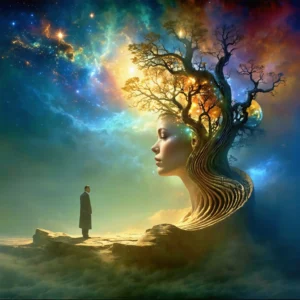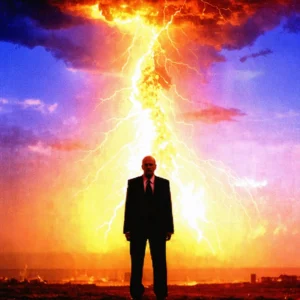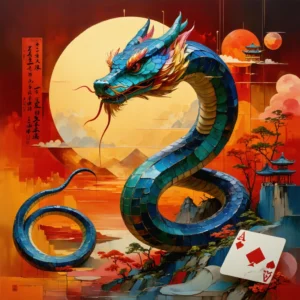
Introduction to an Enigmatic History
From the moment I opened Witchcraft: A Secret History by Michael Streeter, I embarked on a journey that straddles myth, fact, and sincere inquiry. Initially, I questioned the marketing style behind terms such as “secret history” because they often serve as clickbait. However, the narrative quickly revealed that the book weaves historical intrigue with genuine research, inviting readers into the intricate tapestry of witchcraft. Moreover, the author’s decades-long background in journalism shines through, giving life to what might have seemed merely sensationalized aspects of historical lore.
Transitioning from my initial reservations, I found the book structured with deliberate clarity. The work divides the history of witchcraft into three significant eras: the Ancient World, the Medieval World, and the Modern World. Each section resonates with vibrant narratives, careful analysis, and respectful acknowledgement of both myth and historical prejudice. Consequently, this structure categorically enhances our understanding as we progress from ritualistic origins to modern interpretations despite the brevity of individual chapters.
Breaking Down the Structure
It is essential to grasp the organized presentation strewn across the book’s three sections.
The Ancient World
Here, Michael Streeter introduces readers to early forms of witchcraft, delving into topics such as powerful goddesses, empirical rituals, and early magical practices. Additionally, this section explores how early societies perceived witchcraft. An illustrative table accompanies the text, summarizing key themes:
| Theme | Highlights |
|---|---|
| Origins | Early deities, mythic figures, ancient rituals |
| Beliefs | Ritual practices, seasonal celebrations, ancestral reverence |
| Influences | Integration with early religious practices |
The Medieval World
In this section, the narrative takes a darker and more complex turn. Streeter presents the rise of Christianity alongside the increasingly perilous accusations against practitioners of witchcraft. The text unfolds details of the infamous Burning Times, highlighting the complex interplay between religious dominance and popular folklore. Furthermore, the book addresses the widespread injustice meted out in the name of moral opposition. Consequently, his narrative pays homage to those who suffered intellectual and physical persecution.
The Modern World
Finally, the Modern World section connects historical witchcraft practices with contemporary developments, particularly the burgeoning Wiccan movement and coven-based practices. The author presents modern-day rituals and explains how historical roots persist in today’s celebrations of the Wheel of the Year. In doing so, he creates a thoughtful bridge between past prejudices and today’s revivalist perspectives. In addition, the discussion emphasizes that adaptations of witchcraft have evolved to fit diverse cultural and social contexts over time.
Visual and Design Elements
Michael Streeter’s decision to use only black and orange ink throughout the book not only creates a striking visual impact, but also reinforces the thematic connection with traditional images of witchcraft. The monochromatic palette with splashes of orange conjures up associations with autumn, Halloween, and Samhain, while simultaneously being reminiscent of ancient manuscripts. Moreover, the chosen design provides consistency, underlining that despite the shifting epochs, witchcraft endures as a continuous cultural phenomenon. This careful balance in design speaks to the author’s understanding of both aesthetics and historical relevance.
A Dialogue on Perception and Reality
Every chapter advances a dialogue about the evolution of witchcraft – how it both shapes and reflects the spirit of its time. Not only does the book detail well-known practitioners and mythological figures such as the Witch of Endor and Circe, but it also contextualizes figures like Aleister Crowley, Gerald Gardner, and Raymond Buckland. At the same time, Streeter invites readers to reconsider the modern label “witch.” He explains that individuals historically identified as cunning folk, herbalists, or healers, rather than witches, have now been subsumed under a single, oversimplified category. Thus, the book challenges romanticized versions of history while offering an empathetic perspective toward past injustices.
The Role of Marketing Versus Content
Notably, sacrifices become apparent in the form of academic citations and a comprehensive bibliography. Although these omissions might reduce the work’s perceived authority for academic readers, the broader narrative remains accessible. Many young scholars and curious beginners will appreciate the engaging storytelling and the structured journey through witchcraft’s evolution. In addition, the light yet informative tone makes it a suitable introduction for anyone eager to learn about the subject.
Key Elements Recapped in a Numbered List
The book encapsulates its core themes in an organized manner:
- Origins and Early Practices: Unveiling ancient myths and the initial spark of magical traditions.
- Mediated Transformation: Analyzing the impact of Christianity, the witch hunts, and the subsequent fading of certain traditions.
- Modern Revival: Scrutinizing the resurgence of witchcraft in contemporary society and Wicca’s development.
- Visual Storytelling: Leveraging design elements to evoke historical context and cultural symbolism.
- Critical Reflection: Balancing academic inquiry with accessible narrative while acknowledging past injustices.
Critical Reflections and Recommendations
Although Witchcraft: A Secret History does not uncover groundbreaking revelations, it offers a concise overview that remains enthralling. At times, the book hints at hidden layers of knowledge that gradually dissolve when examined through the lens of historical scrutiny. Nevertheless, it excels in making the subject approachable and appealing. Moreover, readers encountering the book for the first time may find it a gateway into further study of the occult, history, and cultural transformation.
Significantly, if your interest lies in deep explorations, consider augmenting your reading list with titles that broaden the historical spectrum. For instance, you might explore:
- A History of Magic, Witchcraft, and the Occult by DK
- A Storm of Witchcraft: The Salem Trials and the American Experience by Emerson W. Baker
- The Oxford Illustrated History of Witchcraft and Magic by Owen Davies
- The Witch: A History of Fear, from Ancient Times to the Present by Ronald Hutton
Conclusion: Embracing the Journey
Ultimately, Witchcraft: A Secret History offers readers a well-balanced narrative that is both educational and engaging. Throughout its pages, Michael Streeter provides a thoughtful meditation on how witchcraft has influenced societal norms and traditions from ancient rituals to modern-day practices. Consequently, the book stands as a commendable starting point for those fascinated by history, folklore, and the revival of ancient practices. Additionally, the lively tone and crisp narrative ensure that the reader remains invested all the way to the end. In summary, while the book may not revolutionize historical scholarship, it indeed succeeds in unearthing forgotten stories and provoking further inquiry into the secret and enduring world of witchcraft.






